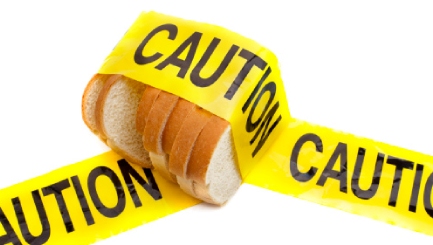Gluten Sensitivity: How Can an Elimination Diet Help?
These days, diet wellness is just as much about what you’re eating as about what you’re not eating – especially if your wellbeing is affected by food intolerances and sensitivities. More and more people are now eliminating all kinds of foods from their diets – including meats, milk, eggs, soya, processed foods, sugars, salt, caffeine and more – but the most common elimination diet is “gluten-free.” So why are so many people ditching gluten?
According to dietician Richa Anand, ‘Gluten is a kind of protein that is found in some grains, mainly wheat. It is the ingredient that adds texture to your bread and makes your doughnuts and cookies rise well when baked. Unlike protein found in grains such as rice, gluten is difficult for humans to digest completely. A small percentage of people are extremely allergic to gluten and develop celiac disease even if they consume a little bit of it. This condition is also known as gluten-sensitive enteropathy or non-tropical sprue. This causes inflammation in the small intestine, which interferes with the absorption of other nutrients. But even if you don’t have such heightened sensitivity to gluten, it is a good idea to cut back on gluten-loaded foods because in general we are now consuming too much of those in the form of bread, biscuits, pizzas, pastas and the like.’
What are the signs that you’re sensitive to gluten? Anand details, ‘The most common symptoms in children between six months and three years of age with gluten sensitivity are diarrhoea, growth failure, vomiting, a bloated abdomen and stools that are abnormal in appearance, odour and quantity. Adults may experience weight loss [despite increased appetite], weakness and fatigue. They may also suffer from anaemia and low calcium in bones [osteopenia and osteoporosis]. Even if you don’t have celiac disease, you may have sensitivity to gluten that shows up as a host of symptoms such as dizziness, unexplainable fatigue, heartburn, skin rashes, nausea, arthritis, infertility, PCOD, and psoriasis.’
How can you diagnose a gluten sensitivity? ‘The best way to ascertain whether you are intolerant to gluten is to eliminate it completely from your diet for about a month,’ Anand asserts. ‘Of course, this means you will have to revamp your diet entirely. You will need to have another look at your grocery list to find substitutes for all your usual foods that contain gluten. You’ll also find yourself reading food labels much more than you would before, but that’s a good habit to develop in any case. If, after 30 days, reintroduction of gluten foods in your diet causes your symptoms to reappear, then it confirms your gluten sensitivity.’ So which foods should you avoid?
- Wheat
- Rye
- Barley
- Oats
- Bakery products such as cakes, bread, biscuits.
- Noodles, pasta
- Malted drinks, chocolates
- Wheat flakes, muesli
Anand points out, ‘Complete withdrawal of gluten from the diet usually results in prompt clinical improvement. During the first few weeks of gluten omission, the diet should be supplemented with vitamins, minerals and extra protein to remedy deficiencies and replenish nutrient stores. Children on gluten-free diets often find it difficult because of the omission of all foods that children relish, such as biscuits, burgers and pizzas. In such cases, alternatives have to be made available such as rice based noodles or rice pastas. In a gluten-free diet, wheat, oat, rye and barley are excluded. Products made from corn, potato, rice, soya bean, tapioca, arrowroot, amaranth seeds and millet can be included. If you are intolerant to gluten, going on a gluten-free diet can have a variety of health benefits, such as improving cholesterol levels, promoting digestive health, and increasing energy levels.’

Comments are closed.